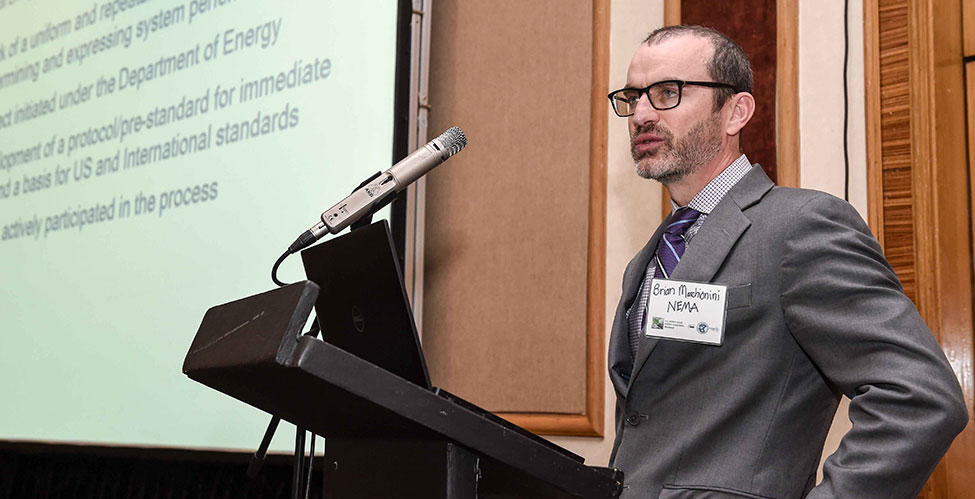by Craig Updyke, Director, Trade and Commercial Affairs, NEMA
July/August 2019

Brian Marchionini, NEMA Senior Program Manager, speaks at the Power Africa Clean Energy Standards Program workshop on energy storage in South Africa in February.
For the Western Hemisphere, the Administration launched the America Crece energy initiative in 2018 (“crece” is Spanish for “it grows”). Led by the Treasury Department but involving six additional agencies, the initiative promotes economic prosperity through energy growth, integration, and security. It encourages energy trade, private sector investment, and financing for transactional growth through bilateral frameworks with individual countries. Targets include power generation, transmission, and distribution; renewables and energy storage; mini-grids; and energy efficiency.
In its first year, the U.S. signed Crece framework agreements with Argentina, Chile, Jamaica, and Panama. In the case of Panama, the initiative has identified 1) high potential for micro-grids with renewables and energy storage in remote communities that are home to 450,000 people and 2) significant regulatory and legal reforms that would be needed. This year it is working to reach framework agreements with Brazil, Peru, and Colombia and advance closer to its potential of $100 billion in new public–private energy sector investments.
For the broad Indo-Pacific region, the Asia EDGE initiative seeks to grow sustainable and secure energy markets. Led by the State Department but involving seven additional agencies, Asia EDGE aims to strengthen the energy security of allies and partners; create open and efficient energy markets; increase energy diversification and trading relationships; and expand energy access across the region.
“We’re helping Asian partner countries leapfrog over decades-old infrastructure and modernize their energy sectors by investing in smart grids, efficient technologies, and mobile apps for electricity payments,” said Mark Green, Administrator of the U.S. Agency for International Development (USAID). “These projects will require high-tech solutions, the kind that U.S. companies are uniquely placed to provide.”
Power Africa, meanwhile, was launched in 2013 to “add more than 30,000 megawatts (MW) of cleaner, more efficient electricity generation capacity and 60 million new home and business connections” in the sub-Saharan region. NEMA has participated in Power Africa’s Standards program to promote awareness and adoption of electrical safety practices and technical Standards for energy storage systems. Over the last six years, Power Africa “has helped facilitate the financial close of 121 private-sector power transactions that are generating (or expected to generate) 10,169 MW, of which 2,652 MW have been commissioned and are producing power.” Since 2017, the initiative has reallocated resources toward natural gas project development in addition to renewable generation and energy storage.